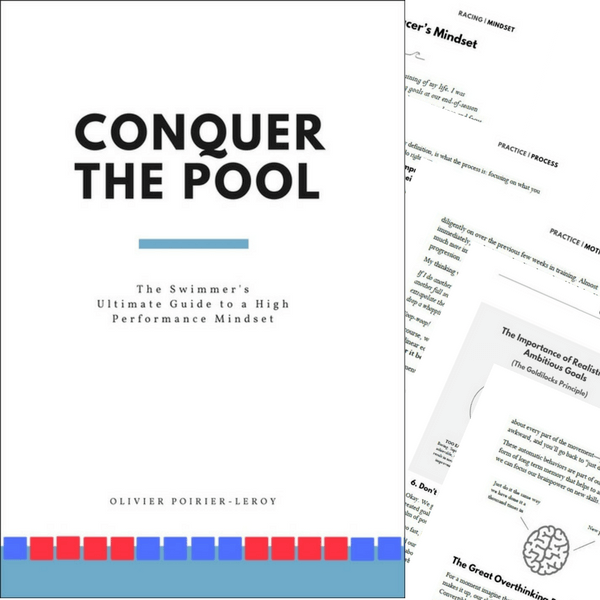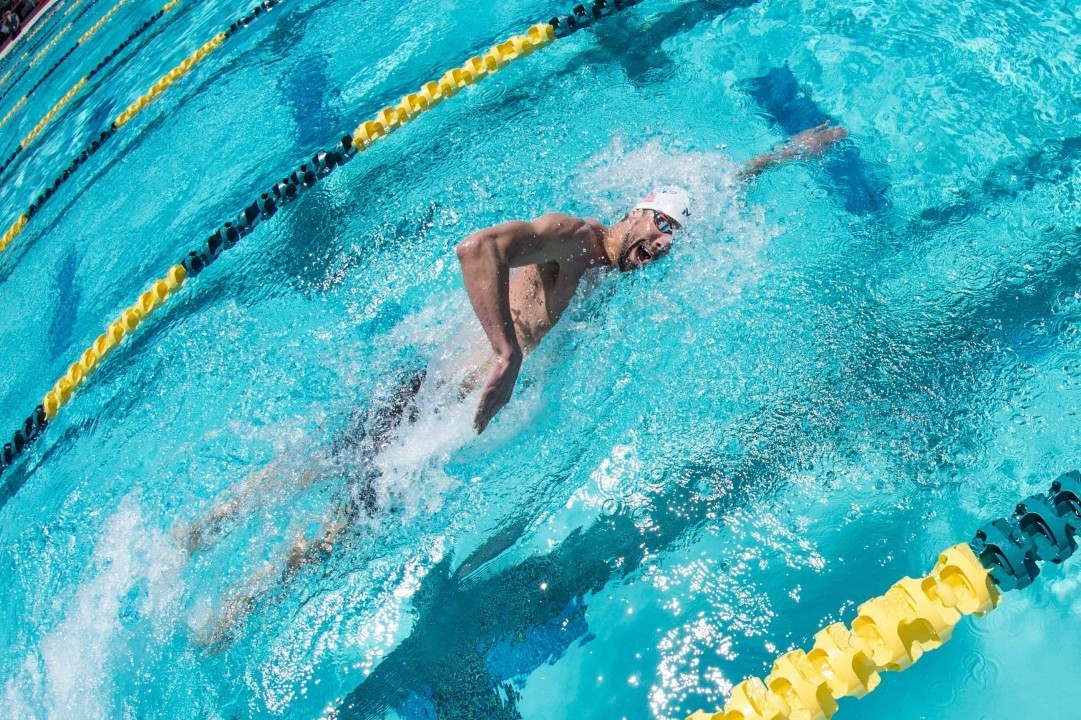Better technique in the pool is crucial for faster swimming.
It’s drilled into us from an early age by coaches.
And one of my favorite habits for better technique is counting your strokes.
Yes, the old-school…
Old-fashioned…
Counting your strokes as you traverse the length of the pool.
(While also counting the number of lengths you are doing, the number of repetitions you’ve done, the number of repetitions outstanding, and countless other things you are already counting 😉)
Here are five benefits to getting your stroke count on when you hit the water today.
1. Keeps you present.
Swim workouts can be long, boring affairs. Sure, the sound of bubbles going by your ears and counting the number of tiles at the bottom of the pool provide some stimulation, but for the most part, it’s you and your thoughts.
Which can lead to daydreaming and mindless swimming.
Counting strokes gives you something to think about besides the homework you have to do later, the seven more rounds of the main set to come, and the plans you have for the weekend.
Counting your strokes is generally considered a way to encourage more efficient swimming, but in my experience, its most potent benefit is keeping you present and engaged with what you are doing in the water.
And, yes, it will even help practice go by a little faster.
2. Increased attention to technique.
Counting strokes gamifies more efficient swimming and gives swimmers a technique-oriented mindset in the water.
A stroke counter’s mindset promotes focusing on the details of your swimming and improved technique.
Swimmers that count their strokes:
- Are thinking about a super clean hand entry
- Fully engage the lats and shoulders when pulling
- Hit that high vertical forearm like it owes them money
- Use the hips and shoulders to “throw” their arms forward with more power to get a little more distance per stroke
- Squeeze their arms and shoulders a little more for a slightly tighter streamline
- More forcefully push off the wall to get a little more distance
All the little things that combine to create awesome swim technique begin to compound when swimmers pay attention to their stroke count, making smoother, faster swimming more habitual.
3. A measure of improvement.
Swimmers who want to improve in the water do so by measuring their times. Makes sense. We are involved in “competitive” swimming, and competition is measured by the times that get posted up on the clock.
But unfortunately, we aren’t going to go best times each time we hit the water.
Stroke counts are another measure of improvement that swimmers can use for motivation and focus during swim training.
For example, if you can swim a 50m freestyle fast in :30 using 32 strokes instead of 33 strokes, that’s a form of improvement. Even though the clock shows the same time, you’ve swum the distance more efficiently.
There are a lot of ways to improve in the water beyond what is immediately on the pace clock (or on your swim watch), and counting your strokes is one of the levers you can pull to become a better swimmer.
4. Learn the balance between effort and efficiency.
Counting strokes is a tool to learn the energy demands of different stroke counts or stroke rates.
By finding that “sweet spot” between the number of strokes being taken per length and speed, you can find the most efficient stroke for swimming longer (or faster).
Cranking up the number of strokes per length may help you cross the pool faster but places a ceiling on your endurance.
Similarly, taking extra long, slow strokes may help you swim until early next week, but the slower speed diminishes performance.
By counting your strokes, and testing yourself at different intensities and stroke counts, you can get a better sense of what moves you most efficiently.
5. Break out your stroke count in case of emergency.
At the 2008 Beijing Olympics, Michael Phelps dove into the water for the finals of the 200m butterfly. He’d dominated the event for the better part of a decade, owned the world record, and was considered the easy favorite to win.
Upon diving into the water, the competitive swimmer’s nightmare came to fruition: his goggles sprung a leak. Slowly at first, but by the third turn, the goggles were full, rendering him largely unable to see.
As told to author Charles Duhigg for The Power of Habit, Phelps remained calm. Not only had Phelps rehearsed similar situations during nightly visualizations in bed, but he had his stroke count on lock.
He knew that the final length of a 200m butterfly would require 20-21 strokes.
Charging down the length of the pool, he took a 21st stroke and finished on a clean, full stroke, breaking his own world record and winning gold.
You might not be competing for Olympic gold, but counting your strokes is a race preparation tool that helps condition you for golden performances in the event of a goggle malfunction.
How to Count Strokes When Swimming
The best way to count strokes when swimming is in your head. For consistency, use similar push-off distances and the number of underwater dolphin kicks.
The benefits of being more engaged with your swimming can’t really be faked by using a tracker; by counting in your head you are intimately more mindful of distance per stroke cycle and all the small adjustments you can make to achieve an efficient stroke count.
That said, tech is everywhere these days, and the pool is no different. There are plenty of tools that you can graduate to for tracking more advanced metrics like SWOLF, average stroke count, and more, whether that’s using one of the wide variety of swimming watches on the market or swim goggles with a heads-up display that displays real-time stroke metrics.
Bottom Line
Improving as a swimmer requires a lot of effort and focus on many different areas. It can feel overwhelming trying to master everything required to excel in the pool.
But counting your strokes is one of those habits that can induce other good habits, including thinking about swimming with better technique, being mindful, and swimming “long and strong” with every length in the pool.
It’s also a habit countless elite swimmers have used over the years to fine-tune technique and speed.
Alex Popov, who won gold medals in the 50m and 100m freestyle at back-to-back Olympics, was renowned for his unbelievably smooth and devastatingly fast stroke.
The legendary sprinter appeared on Inside with Brett Hawke and was asked how often he counted his strokes in training.
Popov’s response?
“Every length.”
ABOUT OLIVIER POIRIER-LEROY
Olivier Poirier-Leroy is a former national-level swimmer, author, swim coach, and certified personal trainer. He’s the author of YourSwimBook, a ten-month logbook for competitive swimmers.
 He’s also the author of the recently published mental training workbook for competitive swimmers, Conquer the Pool: The Swimmer’s Ultimate Guide to a High-Performance Mindset.
He’s also the author of the recently published mental training workbook for competitive swimmers, Conquer the Pool: The Swimmer’s Ultimate Guide to a High-Performance Mindset.
It combines sport psychology research, worksheets, anecdotes, and examples of Olympians past and present to give swimmers everything they need to conquer the mental side of the sport.
Ready to take your mindset to the next level in the pool?
Click here to learn more about Conquer the Pool.
